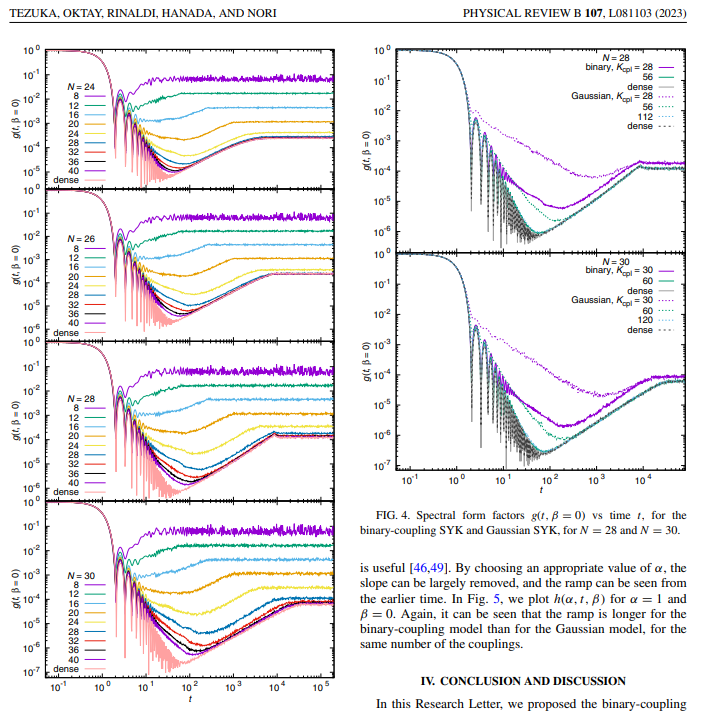The paper “Binary-coupling sparse Sachdev-Ye-Kitaev model: an improved model of quantum chaos and holography“, co-authored by Masaki Tezuka (Kyoto), Onur Oktay, Enrico Rinaldi (Michigan and RIKEN, Wako, Saitama), Masanori Hanada, and Franco Nori (Michigan and RIKEN, Wako, Saitama), has been published (on 6 February 2023) in Physical Review B. A link to the published version is available (link here). Onur Oktay is a Fellowship holder and Visiting Researcher at the University of Surrey. In the Research Letter, they propose a further simplification of the SYK model which they call the binary-coupling sparse SYK model.They set the nonzero couplings to be +/-1, rather than being sampled from a continuous distribution such as Gaussian. Remarkably, this simplification turns out to be an improvement: The binary-coupling model exhibits strong correlations in the spectrum, which is the important feature of the original SYK model that leads to the quick onset of the random-matrix universality, more efficiently in terms of the number of nonzero terms. This model is better suited for analog or digital quantum simulations of quantum chaotic behavior and holographic metals due to its simplicity and scaling properties. The image below shows Figures 3 and 4 from the paper.

